- Home
- Tom Clancy
SSN Page 5
SSN Read online
Page 5
With the aid of overhead imagery, U.S. naval intelligence quickly guessed the Chinese task group’s mission, but they had no immediate way to inform Cheyenne. Since ELF coverage in the South China Sea was sporadic, the submarine was essentially out of contact until she came shallow enough for the floating wire to be able to copy traffic.
At 1000 hours on the day after entering the South China Sea, Cheyenne’s floating wire antenna reached close to the surface and stayed there just long enough to copy recent traffic. An S-3 from Independence relayed the latest intelligence on this rather large Chinese surface and submarine group. The message relayed through the ASWC (anti-submarine warfare commander) to CTF 74—Commander Task Force 74, also known as Commander Submarine Group 7, located in Yokosuka, Japan, also included Cheyenne’s new orders.
Cheyenne was instructed to pass silently near the Chinese task group and find out exactly how many submarines were operating in cooperation with this group.
Most Chinese surface vessels had only a limited ASW (antisubmarine warfare) capability, and so the main threat to Cheyenne would come in the form of attack submarines and maritime patrol aircraft such as the Chinese versions of the Russian 11–28 Beagle known as the Harbin H-5. These aircraft carried bombs and torpedoes, and could pose a serious threat to Cheyenne. Captain Mackey was counting on Independence’s F-14s to handle at least some of these aircraft.
In addition, there was also a shorter-range threat from Chinese helicopters that many of their surface combatants carried on board. Similar in concept to the American LAMPS program, the Chinese had dozens of Chinese models of the French Dauphin helicopter equipped for ASW operations. Once Cheyenne got close to the surface fleet, she would have to be extremely cautious.
Cheyenne picked up speed in order to reach her objective. The Chinese fleet could only move as fast as their slowest vessels, and their overall speed was less than ten knots. They were currently positioned a little over six hundred miles away from the American Carrier Battle Group, just at the edge of the Independence’s aircraft range, but outside of normal CAP (Combat Air Patrol) search sectors. Cheyenne was seventy-five miles east of the Chinese task group.
After a brief run at 12 knots, Cheyenne cut this distance to less than fifty miles. Then the fleet of enemy warships slowed even further. At first glance, it appeared that one of their destroyers was having trouble with its power plant and, wanting to keep the fleet together, they had all stopped. But Mack wasn’t fooled. What the Chinese were doing was laying mines.
Their intent, as Mack saw it, was to lay a minefield in case one of the nations that claimed the Spratlys attempted to invade them. In fact, Mack was willing to bet that all available Chinese naval vessels were now tasked with laying mines at every access to the South China Sea.
Mack figured that after seeing the disastrous loss the Iraqis suffered in the 1991 Persian Gulf War, the Chinese had realized that the only way to defeat the American Navy was by the use of naval mines. This was the American weakness, and the South China Sea — China’s home waters — would be where they would exploit it.
Within an hour, the Chinese task group had come to a complete halt, but that didn’t bother Mack at all. The stoppage of the Chinese fleet allowed Cheyenne to close the remaining distance quickly.
Half an hour later, with battle stations manned, Mack was within range to attack the closest vessel in the fleet, a lone Romeo class submarine that had wandered to the east, away from the group, in an attempt to detect possible enemy operations. As Cheyenne crept closer to the group, at a cautious speed of four-and-a-half knots, it was clear that the Romeo was not aware of her silent presence.
“Conn, sonar, we now have five submarine contacts, all diesels on the surface, operating with this group,” the sonar supervisor advised the captain. “It looks as if they have three Mings and two Romeos. I think the submarines are patrolling the area while the surface vessels lay their mines.”
Mack acknowledged the report and ordered the Mings designated Masters 15, 16, and 17, and the Romeos designated Masters 18 and 19. His assessment of the situation matched that of the sonar supervisor.
As Cheyenne closed on the Chinese task group, Mack was faced with the difficult decision of whether or not he should attack any units in this enemy force. His orders had been to find out how many submarines were operating with this group. He had done that. His obligation now was to convey that information to Independence, but with that first Romeo, Master 18, sitting solidly on his track, Mack’s instinct was to blow that Chinese submarine out of the water.
Mack shook his head and let the Romeo slip away. He had something better in mind. What Cheyenne would do, he decided, was to wait until she had passed outside the range of the Romeo. Then she would use her Mk 48s to attack one of the Jianghu frigates and one of the Ming submarines, since the Ming was the better of the two submarine classes. Cheyenne would then race away and silently head for Independence.
That was Mack’s plan. No battle plan, however, he reminded himself, survives first contact with the enemy.
He got his chance to test that maxim exactly ninety-three minutes later. Cheyenne had reached the outer ring of the rest of the submarines, and the only danger to her now was the ASW helicopters that might be patrolling the area.
The submarine and frigate Mack had targeted were operating within three thousand yards of each other. This would be a perfect Mk 48 shot. He had decided to target the Ming submarine, Master 15, first, and the Jianghu frigate, Master 20, second, because the Ming posed a more serious threat to Cheyenne.
Mack announced firing point procedures for an attack on the Ming, Master 15. “Make tubes one and two ready in all respects, including opening the outer doors!”
Confirmation of his command was almost immediate. Tubes one and two were ready, with their outer doors open.
“Match bearings and shoot, tubes one and two, Master 15.”
Again, confirmation was almost immediate. The first torpedoes were away.
“Cut the wires, shut the outer doors, and reload tubes one and two,” Mack ordered, his voice brisk and efficient.
With their wires cut, the Mk 48s would have to find their target without the help of their guidance wires, but they were close enough to their target that they were virtually certain of acquiring.
Mack put the first two torpedoes out of his mind. They were gone and on their own, and would fail or succeed without his help. Now he had to worry about their next target.
“Make tubes three and four ready in all respects, including opening the outer doors,” he said, beginning the procedure once again. Within moments, the second pair of Mk 48s was headed straight for Master 20, the 1,500-ton frigate.
Aboard the Ming submarine there was little time for reaction. The Chinese captain ordered flank speed in the opposite direction of the torpedoes, but the two Mk 48s continued to close the gap.
The Ming reached its maximum speed quickly, but it simply did not have the ability to outrun the speeding ADCAP torpedoes, cutting through the water at over fifty knots.
The frigate was encountering a similar type of panic. Its first reaction was to begin dropping ASW mortars into the water in an attempt to throw the torpedoes off course.
These mortars, which carried the designation RBU 1200, were unguided but still dangerous. They essentially threw small bombs out to a range of slightly more than 1,200 yards. Since each mortar “shell” carried seventy-five pounds of explosive, their effects were spread out over a large area. There was always the danger that the explosion might damage Cheyenne, even though she was out of their direct range and path.
“Rig ship for depth charge,” Mack ordered.
The mortars were a bad idea. Their explosions did not reach Cheyenne—in fact, they posed a greater risk to the Ming patrolling closer to the frigate. What’s more, rather than harming Cheyenne, they actually helped her. With the loud explosions masking all other sounds — including preventing Cheyenne from learning whether her torpedoes had fo
und their marks — Mack ordered flank speed as he turned to run from the Chinese task group.
Two hours later, with Cheyenne clear of the area and out of danger, her floating wire confirmed that her presence in the area was no longer a secret — but she had announced herself in fine fashion. Three of her four torpedoes had hit their targets, costing the Chinese a frigate and a Ming class submarine.
Along with this information came Cheyenne‘s previous orders: continue with the rendezvous with Independence, still some six hundred miles from Cheyenne’s current position.
Mack was pleased with both the intelligence and the orders, but he knew that they’d have to be even more cautious from now on. Cheyenne was no longer a secret, and she was wearing the enemy’s blood. Every available Chinese ASW asset would be hunting for Cheyenne and attempting to kill her.
But they’d have to find her first, and then they’d have to catch her. And Cheyenne ran fast. Her mission was now to reach Independence—which, at her current speed of twenty-five knots, and allowing for the sprint-and-drift technique, would take about fifteen hours.
Mack secured from battle stations and the rig for depth charge, and then settled in for the transit to Independence.
With Cheyenne running at twenty-five knots four hundred feet beneath the surface of the South China Sea, Mack had time to wonder about his decision to attack the Chinese frigate and submarine. Had he been too aggressive? The captain suddenly felt both guilt and vulnerability for attacking the task group. There had been other, more stealthy alternatives, and perhaps he should have taken them.
This was one of the dangers of post-action letdown. Too many people used that time to play the “what if?” game and to second-guess their own decisions. What if Cheyenne had been damaged? he thought to himself. After all, his main objective was to reach Independence safely, not attack enemy warships. Independence could easily have handled that task group herself.
In addition to the risk of the encounter, Mack knew that he had cost Cheyenne the element of surprise. She was known, now, and being hunted. Perhaps it would have been a better idea to silently drift alongside the Chinese task group, obtain the required intelligence, and then head for the carrier.
These questions troubled him as he prepared to proceed to periscope depth to get information concerning Independence.
“Conn, sonar,” the sonar supervisor reported, “the towed-array picked up a helicopter overhead. We can tell it’s a helo because of the high turbine rpm.”
Hearing this, Mack ordered an immediate excursion to 325 feet. He soon heard the ping of the helicopter’s active dipping sonar through Cheyenne’s hull, and the sound sent chills up his spine. He began to worry, once again, about the wisdom of his earlier decision to attack the Chinese task group.
“Conn, sonar, we just detected a submarine on the surface. It’s beginning to submerge!”
Mack remanned battle stations. The atmosphere in the sonar room grew very tense as everyone waited for the next contact evaluation. It wasn’t long in coming, and it wasn’t good news.
“Conn, sonar, we’ve got another contact,” reported the sonar supervisor. “This one sounds like a Romeo. It must have been waiting for us, playing dead in the water, because we didn’t hear it before the active sonar from that helo.”
Sonar designated the helo as sonar contact Sierra 179. Mack designated the Romeo as Master 21.
Antisubmarine helicopters were always a danger. They were hard for submarines to detect, and their dipping sonars and sonobuoys could provide enemy forces with valuable data on the location of Cheyenne. And that was exactly what this one seemed to be doing.
And if the helicopter was within its torpedo range, Mack realized, they could also drop a torpedo in the water. That would definitely ruin our day, he thought.
“Range to the Romeo, Master 21, is seventeen thousand yards, bearing 025,” the fire-control coordinator reported.
“Sonar, conn, what’s the classification on the one that just submerged?” Mack asked.
“Conn, sonar, it sounds like another Romeo. It sounds closer, bearing 027, sir. Designate Master 22?”
The BSY-1 operators quickly determined that two enemy submarines were five thousand yards from one another. Cheyenne, it turned out, was on a bearing directly between them, the reciprocal bearing 206 if they detected her.
At that moment, the helicopter’s dipping sonar was active again, and this time it was directly overhead.
Mack smiled. That helo pilot had just done them a favor. The two Chinese submarines may have already acquired Cheyenne—which meant that the latest “ping” didn’t help them at all. But the sound energy reflecting off their hulls into Cheyenne’s waiting sonars and the BSY-1 computers gave her accurate firing solutions for both Romeo class submarines.
“Make tubes one and two ready in all respects,” Mack ordered. “Open the outer doors. Firing point procedures, tube one, Master 21, and tube two, Master 22.” Mack wanted the first torpedo going after the closer submarine and the second torpedo aimed at the other.
His orders were confirmed quickly and efficiently.
“Match sonar bearings and shoot, tube one, Master 21 and tube two, Master 22,” he ordered.
“Match bearings and shoot, tube one, Master 21, and tube two, Master 22, aye, Captain.”
Both torpedoes quickly acquired.
Mack acknowledged the reports. “Now, let’s get the hell out of here before we get attacked by that helo. Cut the wires, shut the outer doors, and reload tubes one and two. Ahead flank, right full rudder, make your depth 800 feet, steady on course 180.” Mack was calm as the directed commands were repeated by the persons intended for them. Cheyenne had become a fine-tuned fighting machine. Each man knew what was expected of him.
* * *
Above them, high in the sky, a lone F-14 flying from the aircraft carrier Independence saw the target blip on its radar long before the Chinese helicopter had any idea what was about to happen. With permission of the flag watch officer aboard Independence, the 000–045 sector F-14 pilot was allowed to advance his sector since he had radar contact on the Chinese helo that was harassing Cheyenne. After he cut in his afterburners and approached the target at supersonic speed, permission to fire was passed from the TAO (tactical action officer). With a thumb push on the pickle, the pilot reported “Phoenix 1 away.”
Behind him, in the backseat, his RIO (radar intercept officer), who had done all the targeting work, said, “Phoenix is locked on. That submarine captain sure owes us one.”
Aboard Cheyenne, the sonar supervisor couldn’t explain his latest detections to Mack. “Conn, sonar,” he said, “the helicopter, the one above our position… I think she just crashed! Something fell in the water and the TB-23 is not picking up any helo turbine noise anymore.”
“I guess we just broke Murphy’s law,” Mack replied, his voice as calm and efficient as ever.
Mack had decided not to designate the helo with a Master number. He would leave that to the aviators. However, the helo would find itself in the history of submarine warfare, in Mack’s patrol report, by virtue of Cheyenne’s “Sierra” designation assigned to the helo as one of Cheyenne’s many sonar contacts.
* * *
The remainder of their transit into the southern end of the South China Sea proved, to the delight of both the captain and the crew, to be entirely uneventful. Mack had not realized how enjoyable an uneventful stretch of time could be when the alternative was someone shooting at his submarine.
When they met up with Independence northwest of Natuna Island, Mack and his crew learned that both Mk 48s had found their marks and the Chinese were now down another two submarines. Mack had also discovered the true story behind the “crash” of their Chinese helo.
Mack sent a message to the SEC (submarine element coordinator) on board Independence, requesting a special “thank-you” for the F-14 pilot — a thank-you that, whenever they got a chance to get ashore to buy one, would include a very nice bottle o
f wine.
3. Four if by Sea, Six if by Land
Come to periscope depth,” Mack said. ”I want to have a quick look around before proceeding.” Cheyenne moved slowly from her current depth of three hundred feet beneath the surface of the South China Sea, pausing at one hundred thirty feet to clear baffles. When the sonar supervisor reported no contacts to the OOD, Cheyenne completed her excursion to fifty-nine feet. Before arriving, the OOD, Mack, and the crew members who were trying to eat could feel the effects of the sea state.
Mack had raised the Type 18 periscope while the OOD rode the leaner, less detectable, Type 2 attack periscope. Two sets of eyes were better than one, especially since the sea state could easily mask quiet surface contacts. Once they were near ordered depth, the tops of both periscopes were intermittently awash in the four-foot swells, which were frequently topped with significantly higher waves.
In order not to broach, Cheyenne had to take the swells, caused by a distant storm, no more than forty-five degrees forward of the beam. Otherwise, she would have a tendency to pitch with a ten-second period due to the ninety-foot wavelength of sea state four. Pitching up or down with Cheyenne‘s forward momentum could result in an uncontrollable angle, causing either the sail to be exposed during an up angle or the stern to be exposed during a down angle. Exposing the stern was more dangerous because the seven blades of Cheyenne’s screw would pass through the air-water interface, causing unwanted high-torque jolting of the shaft as each exposed blade once again encountered the water. The weather on the surface was terrible, with violent thunderstorms breaking over the entire region. The power and majesty of the storms were breathtaking, but Mack found himself thinking more about how much they might be affecting flight operations on board Independence. He knew how much bad weather could degrade surface ship operations. That was just one of the many reasons he loved working far beneath the turbulent surface. Unlike their surface counterparts — and especially pilots and land-based soldiers — submariners were rarely affected by the weather, except when they needed to go to periscope depth.

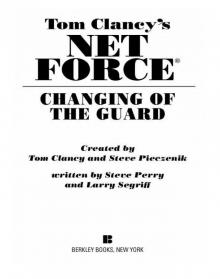 Changing of the Guard
Changing of the Guard Clear and Present Danger
Clear and Present Danger Hounds of Rome
Hounds of Rome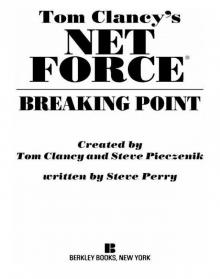 Breaking Point
Breaking Point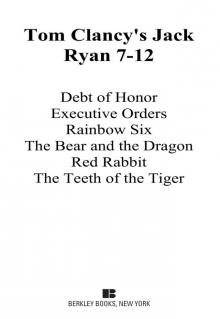 Tom Clancy's Jack Ryan Books 7-12
Tom Clancy's Jack Ryan Books 7-12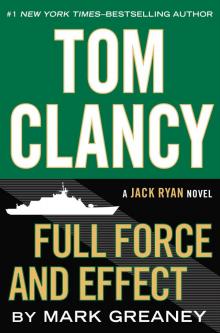 Full Force and Effect
Full Force and Effect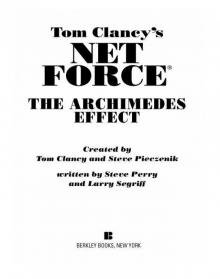 The Archimedes Effect
The Archimedes Effect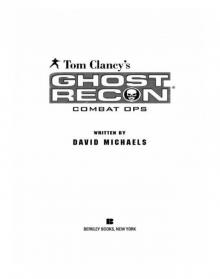 Combat Ops
Combat Ops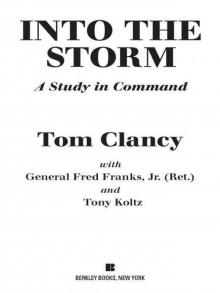 Into the Storm: On the Ground in Iraq
Into the Storm: On the Ground in Iraq Under Fire
Under Fire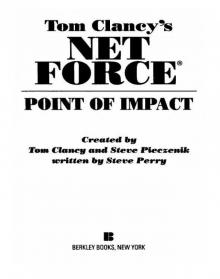 Point of Impact
Point of Impact Red Rabbit
Red Rabbit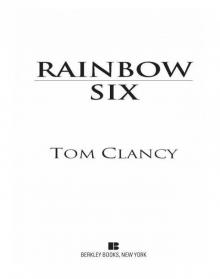 Rainbow Six
Rainbow Six The Hunt for Red October
The Hunt for Red October The Teeth of the Tiger
The Teeth of the Tiger Conviction (2009)
Conviction (2009)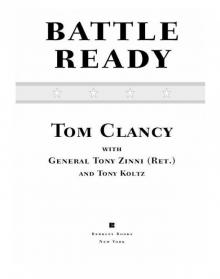 Battle Ready
Battle Ready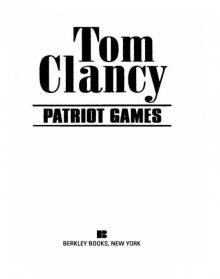 Patriot Games
Patriot Games The Sum of All Fears
The Sum of All Fears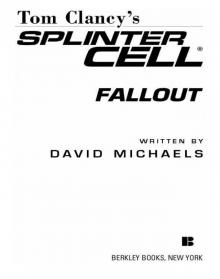 Fallout (2007)
Fallout (2007) Red Storm Rising
Red Storm Rising The Cardinal of the Kremlin
The Cardinal of the Kremlin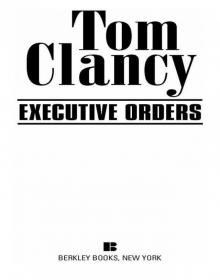 Executive Orders
Executive Orders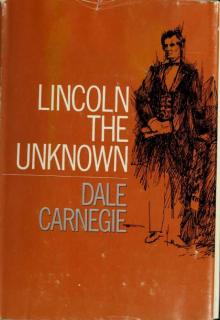 Lincoln, the unknown
Lincoln, the unknown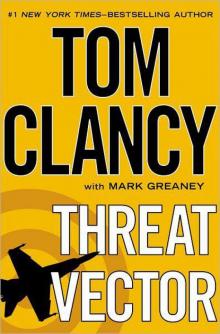 Threat Vector
Threat Vector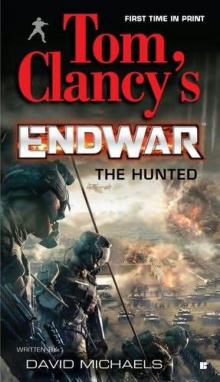 The Hunted
The Hunted Shadow Warriors: Inside the Special Forces
Shadow Warriors: Inside the Special Forces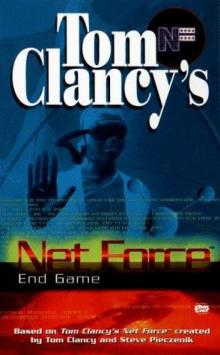 End Game
End Game Special Forces: A Guided Tour of U.S. Army Special Forces
Special Forces: A Guided Tour of U.S. Army Special Forces Locked On
Locked On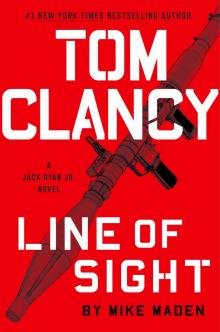 Line of Sight
Line of Sight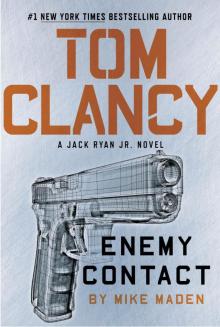 Tom Clancy Enemy Contact - Mike Maden
Tom Clancy Enemy Contact - Mike Maden Fighter Wing: A Guided Tour of an Air Force Combat Wing
Fighter Wing: A Guided Tour of an Air Force Combat Wing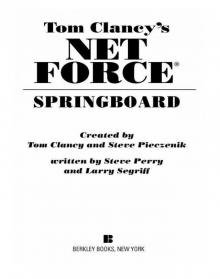 Springboard
Springboard Line of Sight - Mike Maden
Line of Sight - Mike Maden EndWar
EndWar Dead or Alive
Dead or Alive Tom Clancy Support and Defend
Tom Clancy Support and Defend Checkmate
Checkmate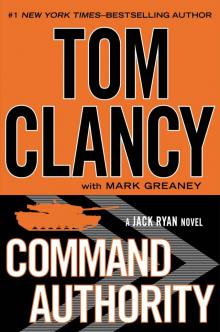 Command Authority
Command Authority Carrier: A Guided Tour of an Aircraft Carrier
Carrier: A Guided Tour of an Aircraft Carrier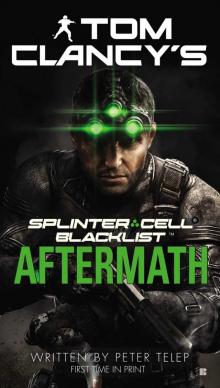 Blacklist Aftermath
Blacklist Aftermath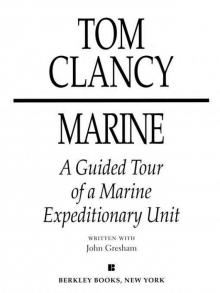 Marine: A Guided Tour of a Marine Expeditionary Unit
Marine: A Guided Tour of a Marine Expeditionary Unit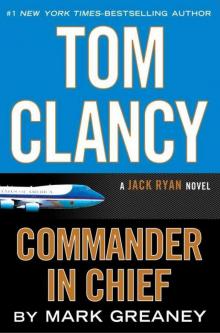 Commander-In-Chief
Commander-In-Chief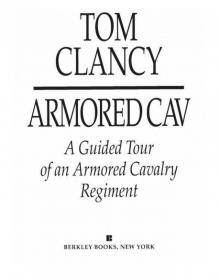 Armored Cav: A Guided Tour of an Armored Cavalry Regiment
Armored Cav: A Guided Tour of an Armored Cavalry Regiment Tom Clancy's Jack Ryan Books 1-6
Tom Clancy's Jack Ryan Books 1-6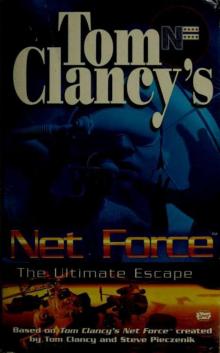 The Ultimate Escape
The Ultimate Escape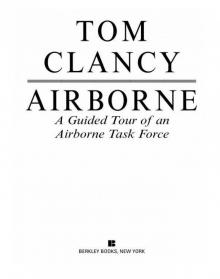 Airborne: A Guided Tour of an Airborne Task Force
Airborne: A Guided Tour of an Airborne Task Force Debt of Honor
Debt of Honor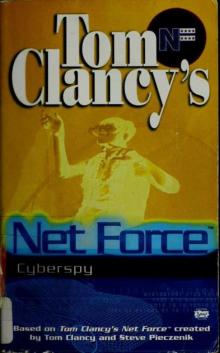 Cyberspy
Cyberspy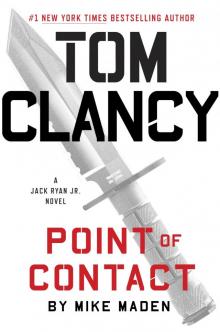 Point of Contact
Point of Contact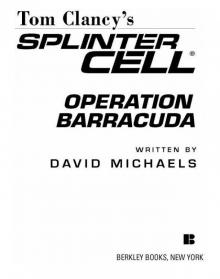 Operation Barracuda (2005)
Operation Barracuda (2005)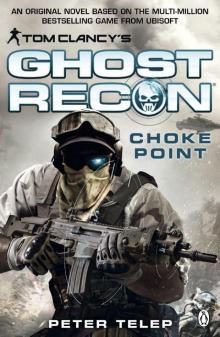 Choke Point
Choke Point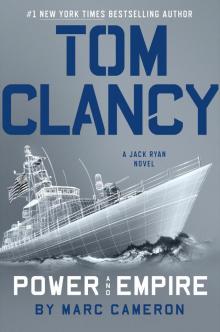 Power and Empire
Power and Empire Every Man a Tiger: The Gulf War Air Campaign
Every Man a Tiger: The Gulf War Air Campaign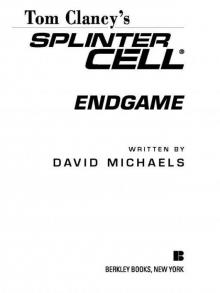 Endgame (1998)
Endgame (1998)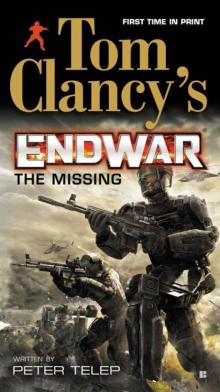 EndWar: The Missing
EndWar: The Missing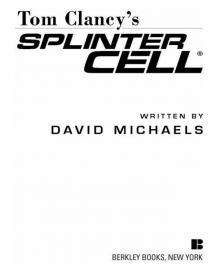 Splinter Cell (2004)
Splinter Cell (2004)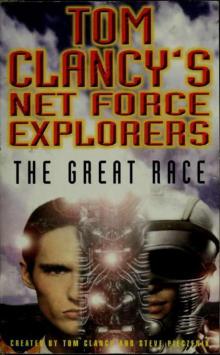 The Great Race
The Great Race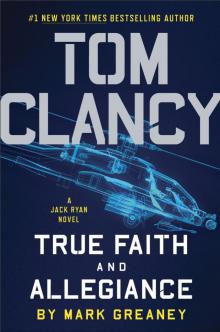 True Faith and Allegiance
True Faith and Allegiance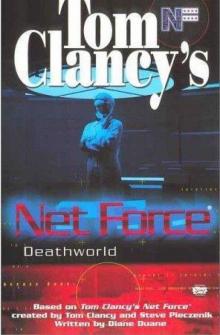 Deathworld
Deathworld Ghost Recon (2008)
Ghost Recon (2008)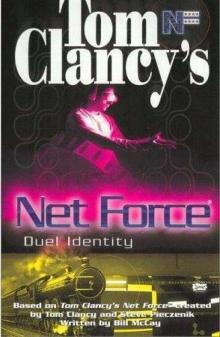 Duel Identity
Duel Identity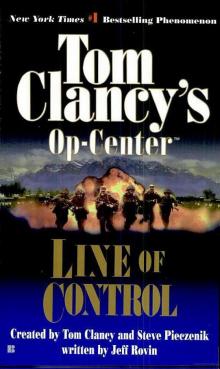 Line of Control o-8
Line of Control o-8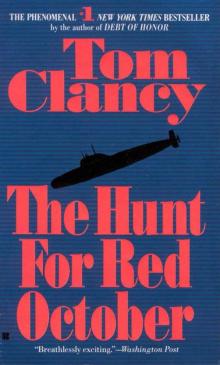 The Hunt for Red October jr-3
The Hunt for Red October jr-3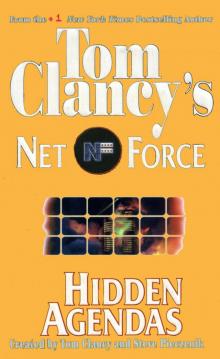 Hidden Agendas nf-2
Hidden Agendas nf-2 Acts of War oc-4
Acts of War oc-4 Ruthless.Com pp-2
Ruthless.Com pp-2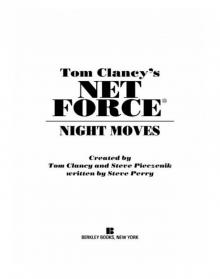 Night Moves
Night Moves The Hounds of Rome - Mystery of a Fugitive Priest
The Hounds of Rome - Mystery of a Fugitive Priest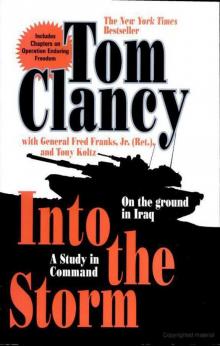 Into the Storm: On the Ground in Iraq sic-1
Into the Storm: On the Ground in Iraq sic-1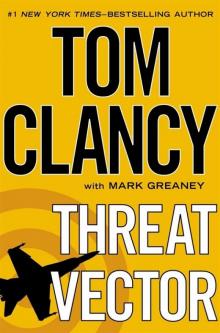 Threat Vector jrj-4
Threat Vector jrj-4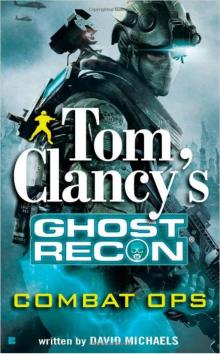 Combat Ops gr-2
Combat Ops gr-2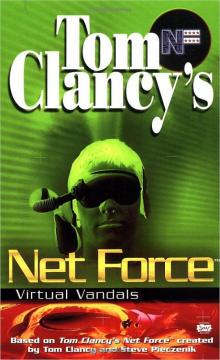 Virtual Vandals nfe-1
Virtual Vandals nfe-1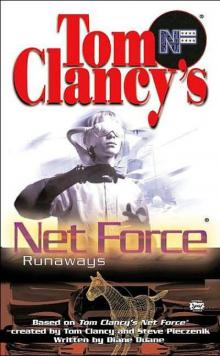 Runaways nfe-16
Runaways nfe-16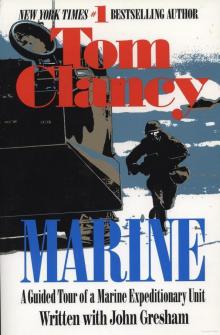 Marine: A Guided Tour of a Marine Expeditionary Unit tcml-4
Marine: A Guided Tour of a Marine Expeditionary Unit tcml-4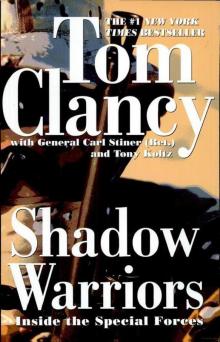 Shadow Warriors: Inside the Special Forces sic-3
Shadow Warriors: Inside the Special Forces sic-3 Jack Ryan Books 1-6
Jack Ryan Books 1-6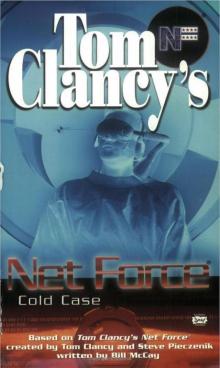 Cold Case nfe-15
Cold Case nfe-15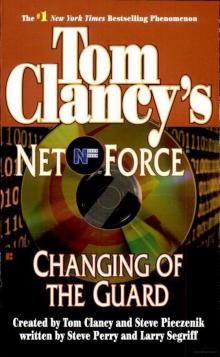 Changing of the Guard nf-8
Changing of the Guard nf-8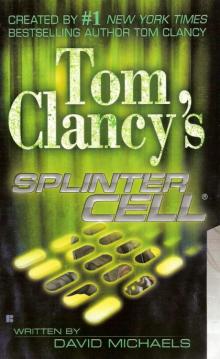 Splinter Cell sc-1
Splinter Cell sc-1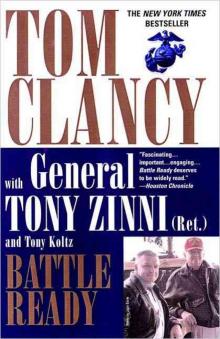 Battle Ready sic-4
Battle Ready sic-4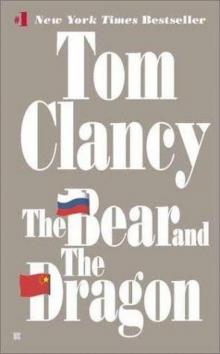 The Bear and the Dragon jrao-11
The Bear and the Dragon jrao-11 Fighter Wing: A Guided Tour of an Air Force Combat Wing tcml-3
Fighter Wing: A Guided Tour of an Air Force Combat Wing tcml-3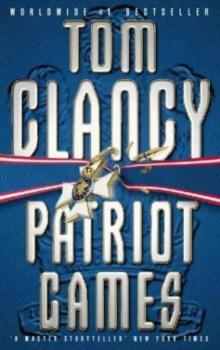 Patriot Games jr-1
Patriot Games jr-1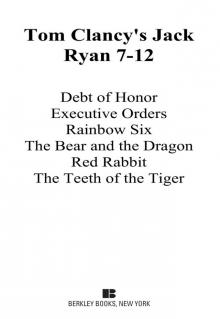 Jack Ryan Books 7-12
Jack Ryan Books 7-12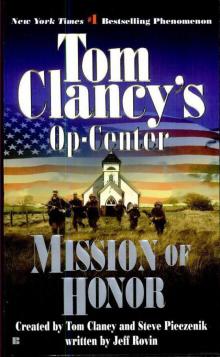 Mission of Honor o-9
Mission of Honor o-9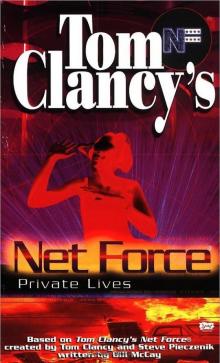 Private Lives nfe-9
Private Lives nfe-9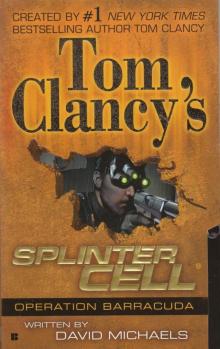 Operation Barracuda sc-2
Operation Barracuda sc-2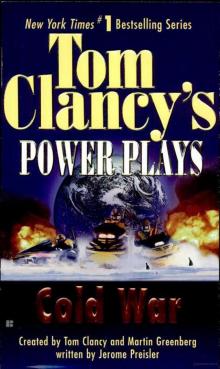 Cold War pp-5
Cold War pp-5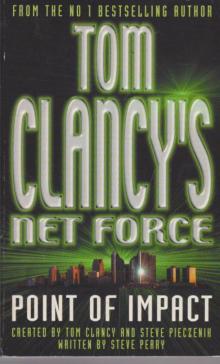 Point of Impact nf-5
Point of Impact nf-5 Red Rabbit jr-9
Red Rabbit jr-9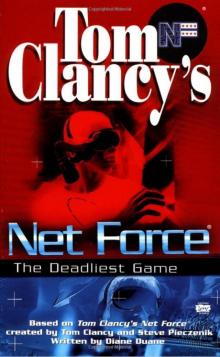 The Deadliest Game nfe-2
The Deadliest Game nfe-2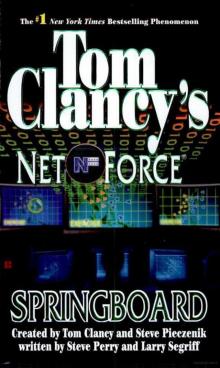 Springboard nf-9
Springboard nf-9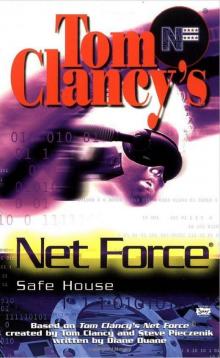 Safe House nfe-10
Safe House nfe-10 EndWar e-1
EndWar e-1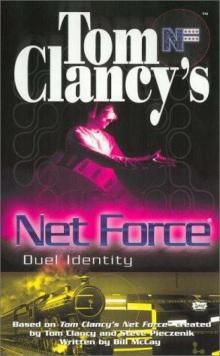 Duel Identity nfe-12
Duel Identity nfe-12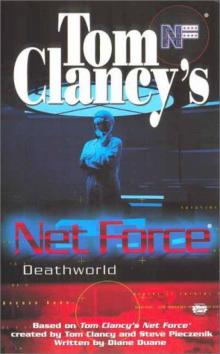 Deathworld nfe-13
Deathworld nfe-13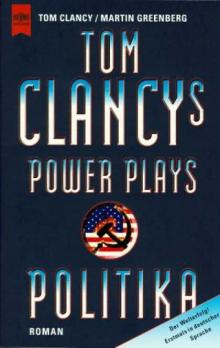 Politika pp-1
Politika pp-1 Rainbow Six jr-9
Rainbow Six jr-9 Tom Clancy's Power Plays 1 - 4
Tom Clancy's Power Plays 1 - 4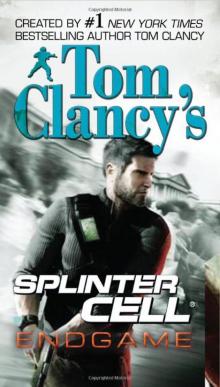 Endgame sc-6
Endgame sc-6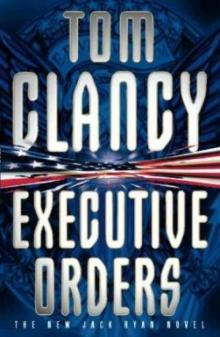 Executive Orders jr-7
Executive Orders jr-7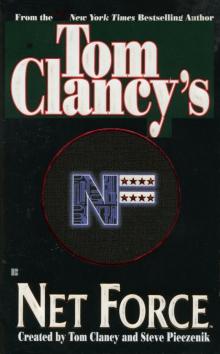 Net Force nf-1
Net Force nf-1 Call to Treason o-11
Call to Treason o-11 Locked On jrj-3
Locked On jrj-3 Against All Enemies
Against All Enemies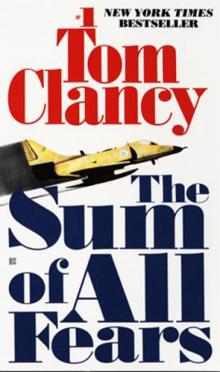 The Sum of All Fears jr-7
The Sum of All Fears jr-7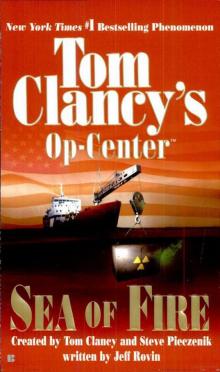 Sea of Fire o-10
Sea of Fire o-10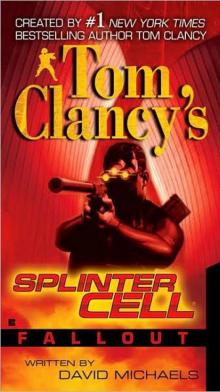 Fallout sc-4
Fallout sc-4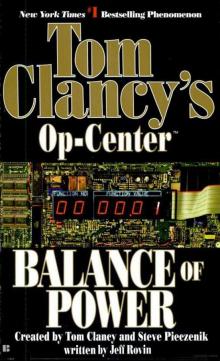 Balance of Power o-5
Balance of Power o-5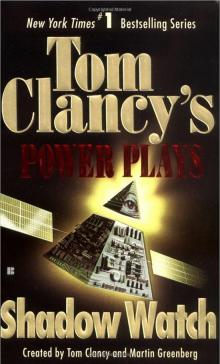 Shadow Watch pp-3
Shadow Watch pp-3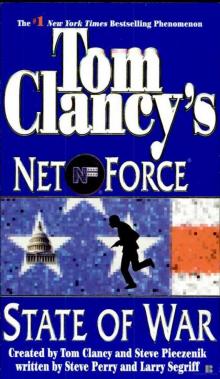 State of War nf-7
State of War nf-7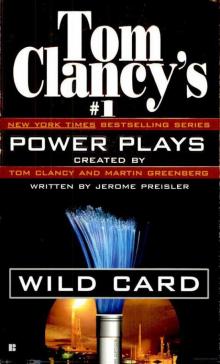 Wild Card pp-8
Wild Card pp-8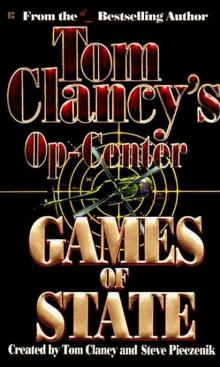 Games of State o-3
Games of State o-3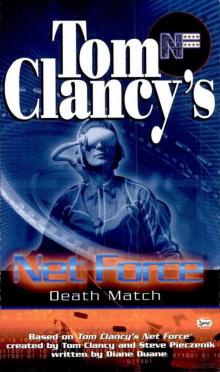 Death Match nfe-18
Death Match nfe-18 Against All Enemies mm-1
Against All Enemies mm-1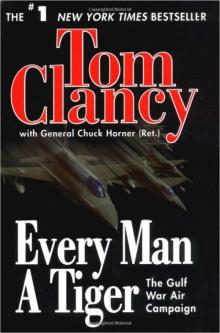 Every Man a Tiger: The Gulf War Air Campaign sic-2
Every Man a Tiger: The Gulf War Air Campaign sic-2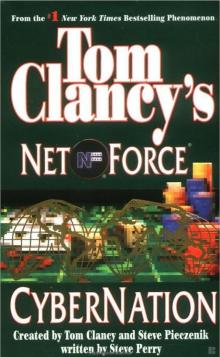 Cybernation nf-6
Cybernation nf-6 Support and Defend
Support and Defend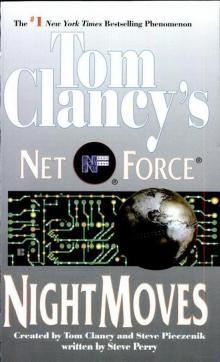 Night Moves nf-3
Night Moves nf-3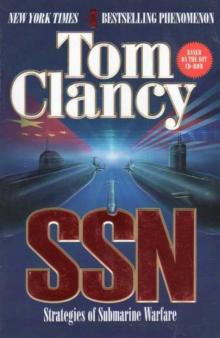 SSN
SSN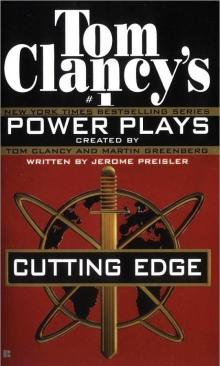 Cutting Edge pp-6
Cutting Edge pp-6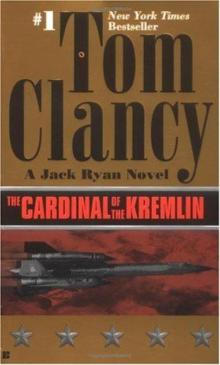 The Cardinal of the Kremlin jrao-5
The Cardinal of the Kremlin jrao-5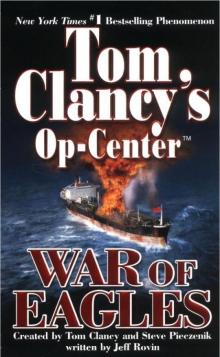 War of Eagles o-12
War of Eagles o-12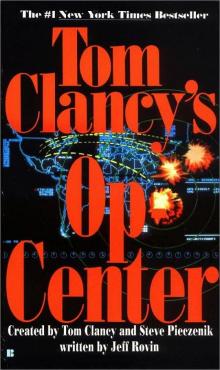 Op-Center o-1
Op-Center o-1 Mirror Image o-2
Mirror Image o-2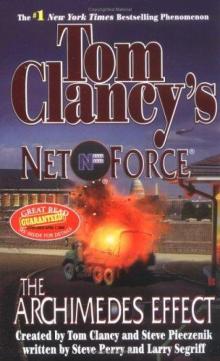 The Archimedes Effect nf-10
The Archimedes Effect nf-10 Teeth of the Tiger jrj-1
Teeth of the Tiger jrj-1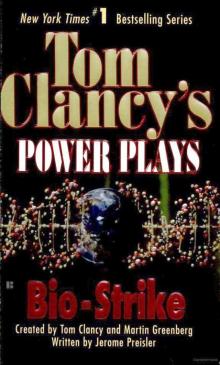 Bio-Strike pp-4
Bio-Strike pp-4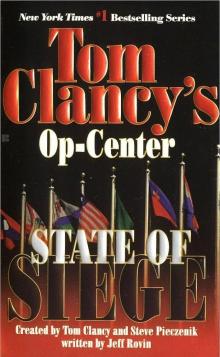 State of Siege o-6
State of Siege o-6 Debt of Honor jr-6
Debt of Honor jr-6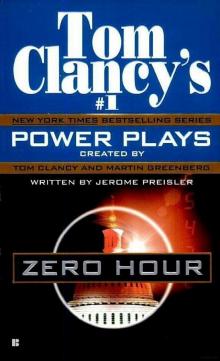 Zero Hour pp-7
Zero Hour pp-7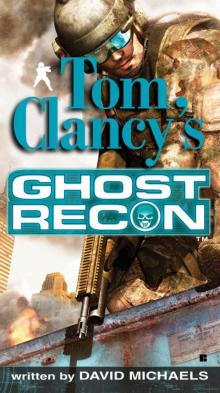 Ghost Recon gr-1
Ghost Recon gr-1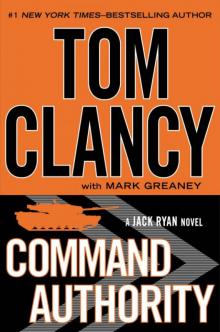 Command Authority jr-10
Command Authority jr-10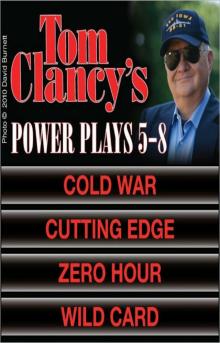 Tom Clancy's Power Plays 5 - 8
Tom Clancy's Power Plays 5 - 8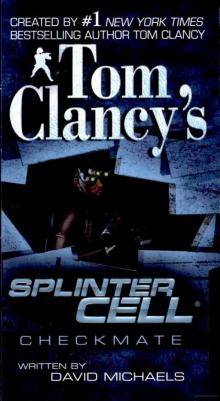 Checkmate sc-3
Checkmate sc-3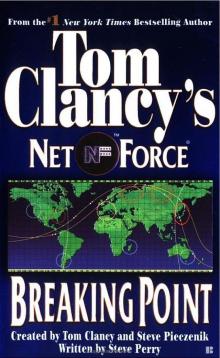 Breaking Point nf-4
Breaking Point nf-4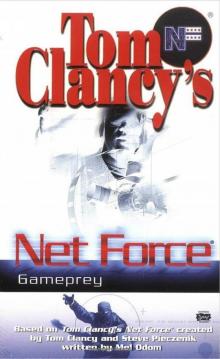 Gameprey nfe-11
Gameprey nfe-11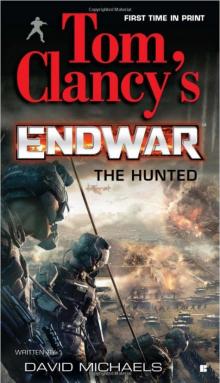 The Hunted e-2
The Hunted e-2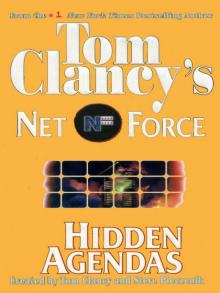 Hidden Agendas
Hidden Agendas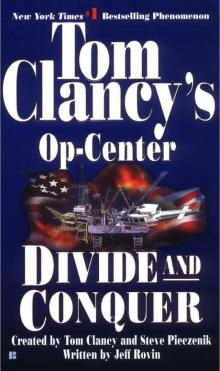 Divide and Conquer o-7
Divide and Conquer o-7